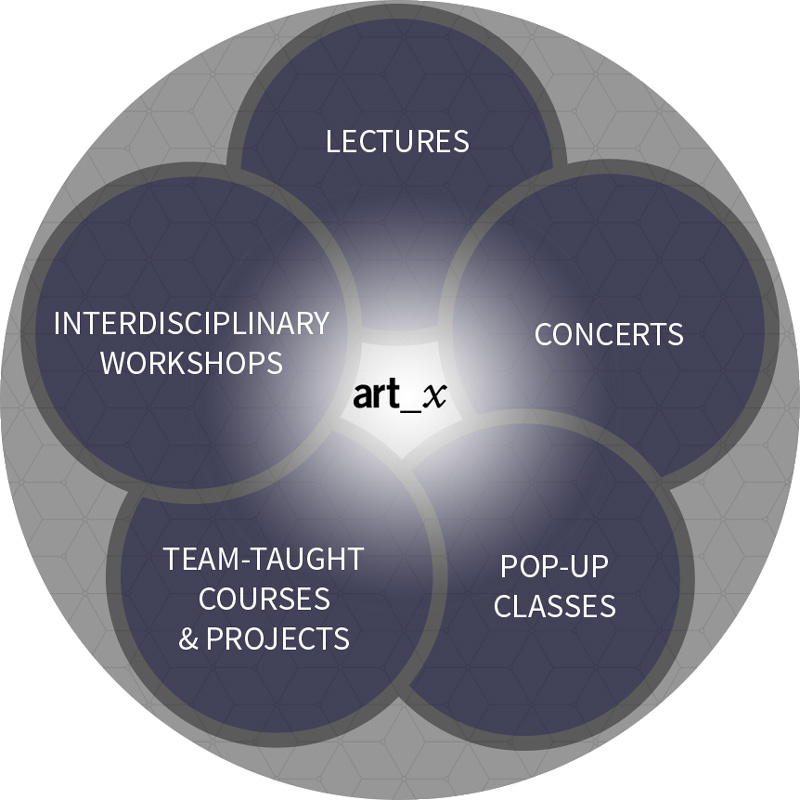Art_x @ Rensselaer is a teaching and learning initiative designed to help Rensselaer students discover the connections that exist between art, science, and technology — connections that can spur their own creativity to greater heights. The program is bringing together Rensselaer artists, scientists, engineers, architects, and business experts in engaging new ways, and challenging them to gain new ideas from one another, to think, discover, design, and create in new ways.
Art_x Structure

Events on campus include interdisciplinary workshops, lectures, concerts, pop-up classes, team-taught courses, and collaborative projects. Art_x includes the incorporation of artistic and aesthetic concepts throughout the curriculum. The initiative focuses on the intersection and union of heretofore disparate disciplines. Our goal is to create an environment at Rensselaer that encourages students to explore the relationships between the sciences, arts and other disciplines, and to cultivate those interdisciplinary experiences to address the global challenges facing us all.
Art_x Offerings
For a class or presentation to be considered Art_x…
- There needs to be an element of art and an element of "x;" an element of a traditional disciplinary study.
- It must be collaborative across the Schools of the Institute (inter-disciplinary or trans-disciplinary) .
- The relationships between disciplines and methodologies must be discussed critically and contextualized for the students.
As the program grows, each semester we see an increasing number of courses embracing the concepts of Art_x across the Institute:
- Traditional classes are adding examples and problem sets related to Art_x.
- New programs are being developed with Art_x at their core.
- New collaborative classes team-taught across Schools, or in conjunction with EMPAC, are being offered.
- Special Art_x offerings change from semester to semester to address current topics and opportunities at EMPAC.
Course examples:
- Physics I, Physics II and Honors Physics, and Astronomy have introduced sound and music examples into their courses.
- Astronomy introduces final projects that incorporate artistic interpretations of class concepts of the universe.
- HASS Inquiry Course, "Introduction to Music and Sound," examines the physics and acoustics of sound, and works closely with EMPAC to introduce the students to the technologies of music and performance.
- Mathematical Studies introduces Math 1900, "the Art and Science of Mathematics."
- Chemistry introduces a new "Art Forensics" track.
